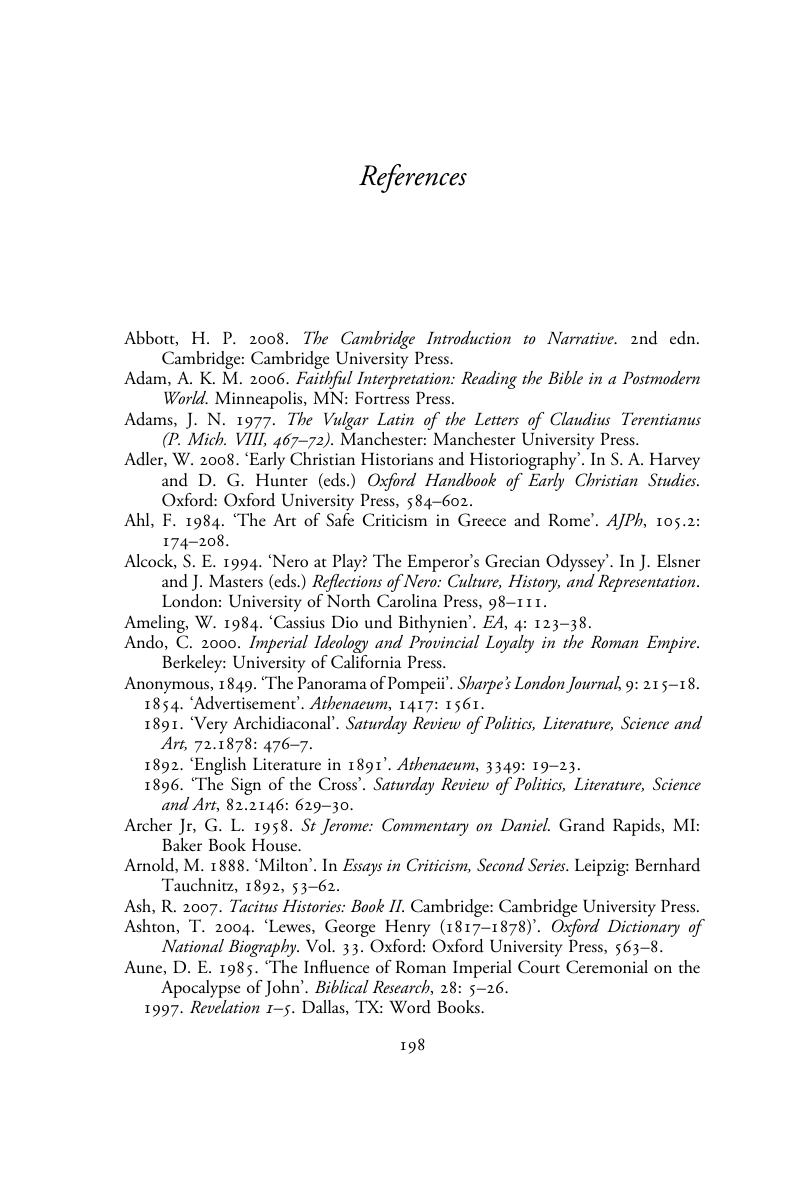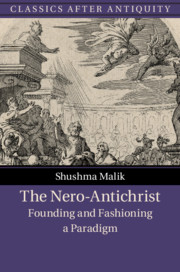Book contents
- The Nero-Antichrist
- Classics after Antiquity
- The Nero-Antichrist
- Copyright page
- Dedication
- Contents
- Foreword
- Acknowledgements
- Abbreviations
- Chapter 1 Introduction
- Chapter 2 Nero and the Bible
- Chapter 3 The Invention of the Nero-Antichrist
- Chapter 4 Reviving the Nero-Antichrist
- Chapter 5 Epilogue
- Appendix A List of Early-Christian References to the Nero-Antichrist
- References
- Index
- References
References
Published online by Cambridge University Press: 27 March 2020
- The Nero-Antichrist
- Classics after Antiquity
- The Nero-Antichrist
- Copyright page
- Dedication
- Contents
- Foreword
- Acknowledgements
- Abbreviations
- Chapter 1 Introduction
- Chapter 2 Nero and the Bible
- Chapter 3 The Invention of the Nero-Antichrist
- Chapter 4 Reviving the Nero-Antichrist
- Chapter 5 Epilogue
- Appendix A List of Early-Christian References to the Nero-Antichrist
- References
- Index
- References
Summary

- Type
- Chapter
- Information
- The Nero-AntichristFounding and Fashioning a Paradigm, pp. 198 - 223Publisher: Cambridge University PressPrint publication year: 2020



